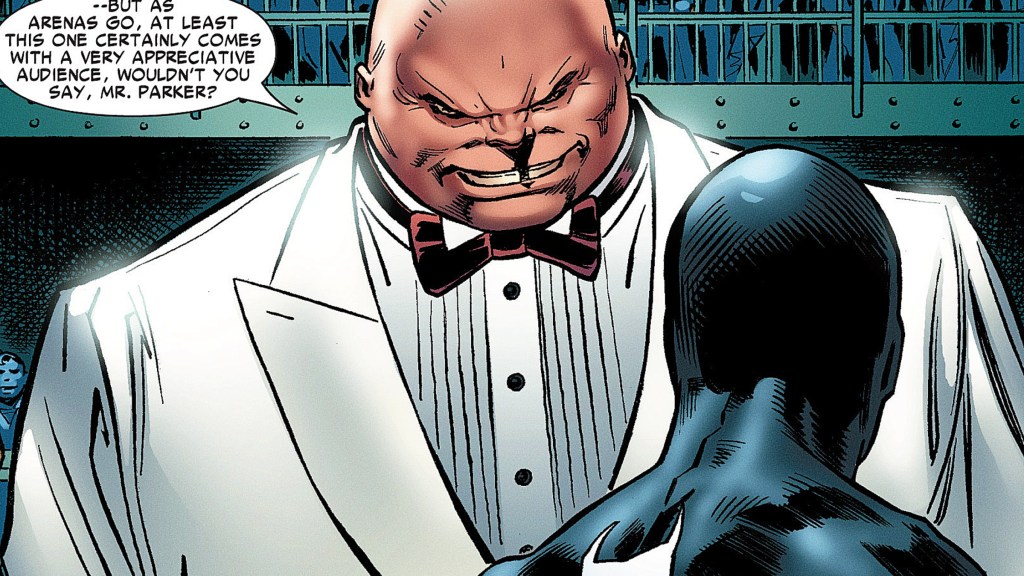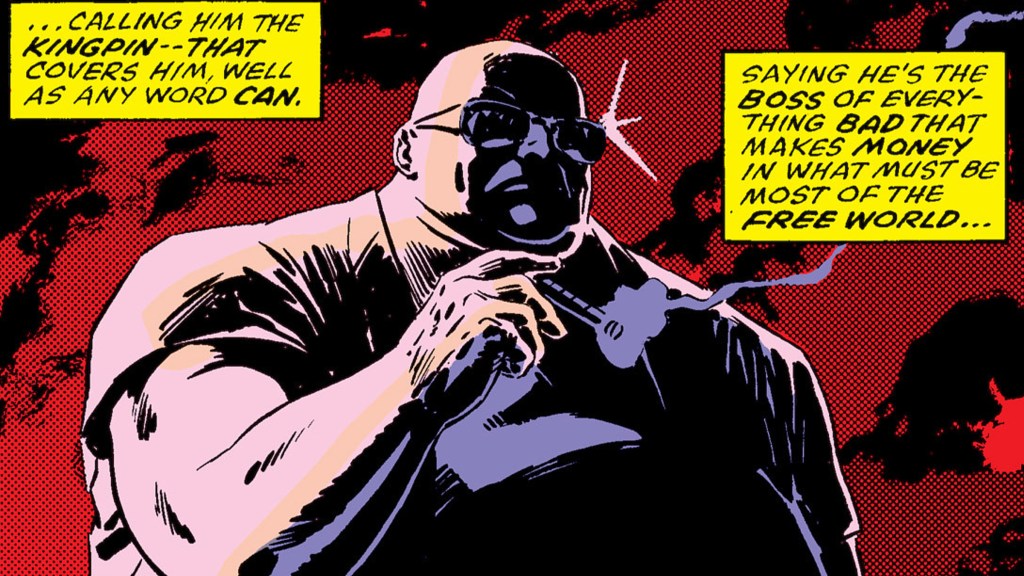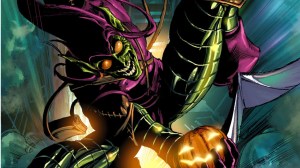There are many reasons why Norman Osborn’s Green Goblin is often considered Spider-Man’s greatest enemy, but perhaps the most compelling is that they are, at their core, mirror images of each other. Both men have faced similar circumstances — from the scientific origins of their powers to the burden of personal trauma — yet they have chosen drastically different ways to confront those challenges. As a result, their conflict goes beyond simple opposition; it becomes an existential clash of values, beliefs, and worldviews. This tension is heightened by the fact that Osborn and Parker are not only adversaries on a “professional” level but are also entangled in each other’s lives outside the mask, ensuring their struggle continues both on and off the battlefield.
Videos by ComicBook.com
Despite the complicated intimacy of Spider-Man’s conflict with the Green Goblin, Norman Osborn is not truly Spidey’s greatest enemy. That distinction belongs instead to Wilson Fisk’s Kingpin. While Kingpin may lack the same deeply personal connection, he possesses a far greater ability to inflict pain — both physical and emotional — on the web-slinger. Unlike the Green Goblin, whose actions often stem from whim or bursts of madness, Kingpin operates through rational, organized strategies. The contrast lies in the nature of their assaults: Kingpin’s meticulously premeditated campaigns of suffering and retribution versus the Green Goblin’s impulsive, heat-of-the-moment outbursts of rage.
The Heavy Burden of the Kingpin’s Threat

As his nickname suggests, the Kingpin’s true power stems not from his physical strength, but from his genius for manipulation, bribery, and bullying to make others serve his will. While physically formidable — a key source of his intimidation — he has never been a genuine physical match for Spider-Man, who has consistently proven himself stronger, faster, and more powerful. The Kingpin’s real threat to both Spider-Man and Peter Parker has always been his ability to operate from the shadows. Unlike other villains, his control over the criminal underworld, his influence in government, and his ability to bend law enforcement to his will meant Spider-Man had to fear not only the Kingpin himself, but also the threats he could orchestrate from the entire city and community.
Perhaps the best example of the Kingpin’s brand of malevolence appears in Daredevil’s Born Again story arc. Much like the Green Goblin’s discovery of Peter Parker’s identity, the Kingpin uncovered that Matt Murdock was Daredevil. Yet the way each villain wielded that knowledge could not be more different. In Amazing Spider-Man (1963) #122, the Green Goblin used his revelation to strike directly, unleashing a single, devastating act against Parker. By contrast, in Daredevil #227–233, Fisk employed his discovery to orchestrate a calculated campaign of psychological torment — deliberate, methodical, and unrelenting. Rather than a catastrophic one-time event, like Gwen Stacy’s death, the Kingpin’s actions were meant to deliver a slow, inexorable descent into hell.
The Kingpin’s Power Comes in Multiple Forms

Both Spider-Man and Daredevil suffer deeply at the hands of their formidable opponents. In Spider-Man’s case, however, he finds a measure of vengeance by bringing down the Green Goblin soon after Gwen Stacy’s death. Daredevil, by contrast, endures a pain so systemic and consuming that even defeating the Kingpin and sending him to prison offers no real solace. Where Spider-Man is devastated, Daredevil is left utterly broken — a hollow shell of himself, forced to summon the strength to rebuild and restart his life from the ground up – before he can even begin to consider seeking revenge, retribution, and closure.
But the Kingpin’s ability to torment Spider-Man is not merely personal. He can inflict pain from multiple angles, ensuring that no part of Spider-Man’s or Peter Parker’s life is beyond his reach. Every move carries the weight of a Kingpin “executive order,” embodying the principle of “you can run, but you cannot hide.” This power was most vividly demonstrated during his tenure as mayor, when he transformed parts of the city government into publicly funded extensions of his criminal empire — dramatically expanding his control over the city to previously unimaginable levels.
As mayor, Wilson Fisk — as fans will recall — outlawed vigilantism, formed his own private security force, and used a combination of advanced technology and city databases to compile incredibly detailed files on anyone he deemed useful or a threat. In the Devil’s Reign limited series, the Kingpin used this power to systematically target New York’s superhero community, including the families and friends of heroes with public identities, as well as those whose secret identities he surreptitiously discovered.
The Kingpin Proves the Most Effective Villains Mix Brains With Braun

After his tenure as mayor, the Kingpin, though no longer in office, didn’t lose his power. In fact, he became even more powerful. During his time as mayor, he eliminated criminal rivals, amassed generational wealth, limited the influence of superheroes, built a network of political connections, and used city databases and advanced surveillance tech to compile detailed files on everyone. These strategic moves left him in a much stronger position after he left office. For a person with the Kingpin’s ambitions, remaining mayor would have actually been more limiting. Naturally, all these new advantages could be used against Spider-Man and Peter Parker, should he discover his identity.
So, while Spider-Man can neutralize the threat posed by the Green Goblin through arrest and imprisonment, the danger presented by the Kingpin was far more complex. Incarcerating him does not eliminate his capacity to inflict harm. His network of henchmen, associates, and those coerced by “offers they couldn’t refuse” ensured that anyone — from J. Jonah Jameson to Flash Thompson to even Aunt May— could become a liability for Parker and Spider-Man. If the Kingpin “got to them,” or if they were otherwise susceptible to his influence or intimidation, they too become potential threats to Spider-Man.
What do you think? Let us know in the comments!
Want to stay up to date on the biggest geek entertainment news? Add us as a prefer source in Google – HERE.









